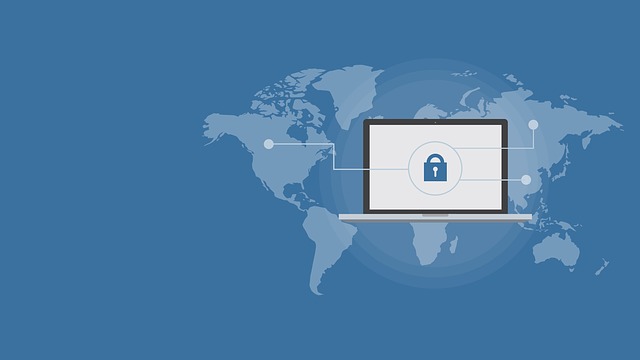DDoS attacks are one of the biggest threats to online businesses. In recent years, we have seen a sharp increase in their frequency and sophistication. This increase is fueled by technological advancements and the digitization of companies from all industries. Failing to detect and prevent a DDoS attack can have major consequences for any business. Damage to brand reputation, lost customers, and lower sales can severely impact your bottom line and negatively affect your company in the long run.
Many companies make the mistake of underestimating DDoS attacks and not preparing adequate detection and mitigation measures. In this article, we will provide you with an in-depth look at how DDoS attacks work and what you can do to prevent them.
What Are DDoS Attacks?
A distributed denial-of-service (DDoS) attack is when a hacker uses a network of bots to generate large amounts of fake traffic to a server. The server gets overwhelmed and cannot properly process real requests from actual users. DDoS attacks are relatively easy to execute, but are highly effective, especially against websites. There are a multitude of reasons why you might become the target of such an attack, and virtually no online business is safe.
Preventing DDoS Attacks
In recent years, DDoS attacks have grown in terms of volume and frequency. They have become much more sophisticated as well, making attacks hard to detect and prevent. Unfortunately, there is no single all-encompassing solution that can protect you entirely from DDoS attacks. Even though there are security software companies that offer DDoS protection, their solutions cannot do the job alone. Instead, any anti-DDoS software should be a part of a complex, multi-layered security stack.
Let’s take a look at a few actionable tips that will help you detect, prevent, and mitigate DDoS attacks.
Increase Your Bandwidth
One of the most basic and effective things you can do to prevent DDoS attacks is to upgrade your server infrastructure. Since DDoS attacks work by overloading a server with traffic, more available bandwidth will make the server able to handle sudden large spikes in requests. Essentially, in order for your server to be DDoS-resistant, its bandwidth needs to be larger than the bandwidth the hacker is attacking you with.
However, with the rise of IoT botnets and amplification attacks, hackers have virtually unlimited bandwidth at their disposal. Because of this, simply increasing the bandwidth of your server alone is not a practical solution and will not protect you from DDoS attacks.
Implement Redundancy in Your Architecture
If a DDoS attack manages to take down your single server, it will essentially cripple your operations. In order to prevent this, you can invest in multiple servers spread across different data centers. Implement a system that spreads incoming traffic equally between servers — this way, if one server gets taken down, your operations can continue on the other servers in the network.
When designing your server infrastructure, make sure to avoid obvious network bottlenecks and single points of failure. For optimal security, the different data centers should be located in different countries. Hackers will have a hard time attacking more than just a portion of your servers. As a result, the other servers will remain unaffected and able to handle the extra traffic and requests.
Upgrade Your Network Security
While bandwidth and network redundancy are important, you cannot ignore the purely software-based aspect of security. Multi-layered stacks are not guaranteed to stop DDoS attacks, but are an important component in the mix. Make sure your network is secure with enterprise-level versions of the following software:
- Firewall
- Anti-malware programs
- Anti-virus software
- External threat monitoring tools
- Network monitoring solutions
Real-time monitoring of all incoming traffic is essential to detecting DDoS attacks. Our advice to you is to find a monitoring solution that makes use of big data and cloud technologies. It will have the capacity you need to monitor, catch, and analyze incoming DDoS attacks as they are happening.
Create a DDoS Response Plan
Any hardware and software upgrades and solutions will not do the trick unless you and your staff are ready to act. Coming up with a comprehensive DDoS response plan is essential to detecting and preventing potential threats. You need to carefully go through each component of your infrastructure and assess its level of security. Any and all vulnerabilities need to be identified and included in your DDoS response plan. Prepare a checklist of all potential targets and set up an alert system.
Your DDoS response plan should also include guidelines, processes, and procedures that need to be executed if an incoming DDoS attack is detected.
Depending on the size and scope of your organization, you might have to create a DDoS response team. In a perfect scenario, you will have such a team present at each of your data centers. Ensure that there are proper roles and that there is an escalation chain in place.
Conclusion
Nowadays, DDoS attacks are a bigger threat than ever before. The massive implementation of 5G networks and the rapid digitization of businesses makes DDoS attacks even more effective and dangerous. Any organization that has an online component needs to be aware of this threat and prepare itself accordingly. If DDoS attacks are enough to take down giants like Google and Amazon, no company is safe.
By following the steps outlined above, you will be able to set a good foundation on which to build your DDoS detection and prevention system. Ensuring your servers are secured and based on redundancy is extremely important. However, do not underestimate the usefulness of a carefully crafted DDoS responsible plan, along with the people needed to properly execute it.





